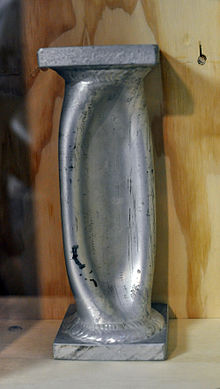 |
| Layer 3 |
For example, there are inexplicable value changes that really can't be anything other than failure of the device or parts of it.
The bottom pressure equipment at first only lasted a few days in the really deep waters.
 |
| Layer 4 |
 |
| Layer 5 |
 |
| Layer 6 |
 |
| Layer 7 |
 |
| Layer 8 |
 |
| Layer 9 |
 |
| Layer 10 |
 |
| Layer 11 |
 |
| Layer 12 |
 |
| Layer 13 |
So, the ultimate goal is to find the single location, or small group of them, with which to watch the rising sea levels around the globe.
I have been using collections so far because I need to learn all the ins and outs of this dataset, and how to best apply it.
The graphs today are print outs of condensations of millions of in situ measurements that are averaged by year after some analysis is done.
Basically they are observations of changes in and variations of mixtures of pressure and 'height' (a.k.a. 'depth').
Thus, they have no single unit of measurement such as meters, millimeters, millibars and the like.
The numbers are mixtures of units, so they are related only by comparisons to each other.
At the station level I will use millibars, meters, and millimeters as the particular case may call for.
I have found that those who are producing and sharing the in situ data are not yet using the TEOS-10 toolkit as the official institutions in Oceanography had hoped.
I am using that toolkit because it is quite robust and efficient.
It saves time and adds professional accuracy to many efforts.
For example, one note in the file headers indicate that they calculate 'height' a.k.a. 'depth' by using '670.0' as a constant for determining sea level change (SLC).
They divide the pressure (P) in millibars by '670.0' to ascertain the 'depth' (positive number) or 'height' (negative number) in millimeters.
The better, easier, and more accurate way is to use the TEOS-10 toolkit function "Z = gsw_z_from_p (P, latitude)", because the gravitational impact on P changes with latitude.
One size fits all will not be as accurate in the long run.
So, I will continue to check out the data and develop ways and means of detecting where it obviously contains data generated by a damaged gauge.
One case in point is a situation where a gauge, overnight, indicated that the ocean level
 |
| Bottom Pressure |
Those situations are to be expected at depths of thousands of meters because the pressures are otherworldly (but see this: A New Concept).
The example in the photo to the right shows a pipe that was crushed by bottom pressure.
Tomorrow I plan to detail some single stations in a search for "the golden OBP gauges" a la the golden twenty three tide gauge stations (Golden 23 Zones Revisited).
Doing this work is exhausting but once the system is designed and working fully it will be a valuable asset to the Dredd Blog system.
The next post in this series is here, the previous post in this series is here.
No comments:
Post a Comment